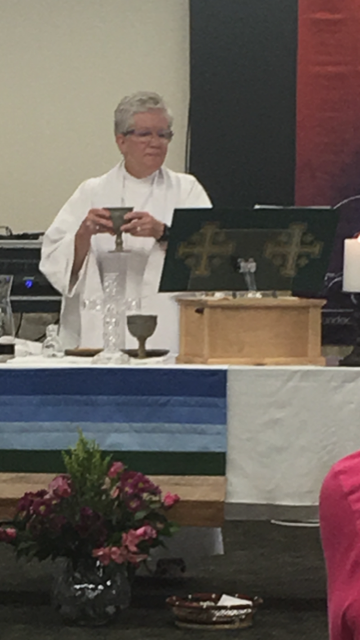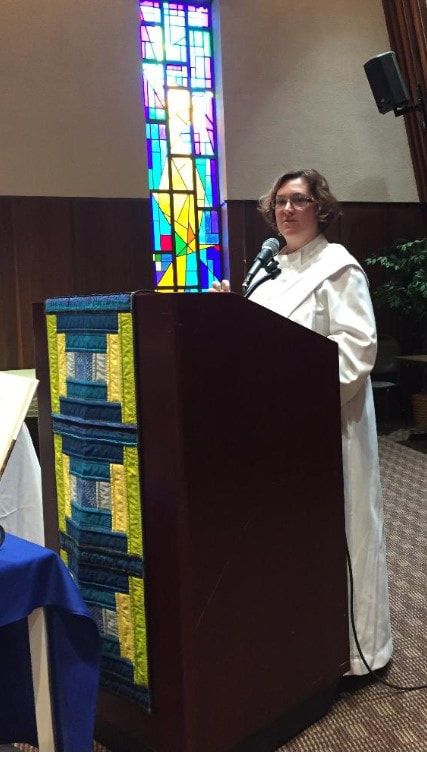April 19, 2025
Easter Vigil
Helen Weber-McReynolds, RWCP
Genesis 1: 26-27, 31; Exodus 14: 15-16, 29, 31; 15: 20-21 ; Isaiah 55: 1-11;
Baruch 3: 9, 32-36, 38; 4: 1-2; Romans 6: 3-4; John 20: 1, 11-18
“I have seen the Teacher!” Jesus is alive! I have talked to him and he told me come here and tell you all—he is not dead, he is alive! This was the message of Mary Magdalene after her encounter and conversation with Jesus in the garden, the day after his execution. This passage is familiar to us here at St. Mary of Magdala, since we usually read it for Easter, and also for St. Mary Magdala’s Feast Day on July 22. But this account of the resurrection is NEVER read on Easter in the traditional Catholic parish lectionary- only on the Tuesday after Easter, when not that many people get a chance to hear it. Most parishes on Easter read the nine verses from John, Chapter 20, just before the passage we read, about Peter and another disciple running to the tomb after they had been alerted by Mary Magdalene that his body was missing. So those parishioners miss out on the truth that Mary Magdalene was the first to know the truth of Christ’s resurrection, and the one to communicate it to the other apostles. About Mary Magdalene Pope Francis has said, in his 2020 book, Let Us Dream: The Path to a Better Future, “The Lord first announced the New Life to women because they were present, attentive, and open to new possibilities. Could it be that in this crisis the perspective women bring is what the world needs at this time to face the upcoming challenges?” And the final document of the recent second synod of Bishops and other lay and religious leaders in Rome said this: “One woman, Mary Magdalene, was entrusted with the first proclamation of the Resurrection… It is important that the scripture passages that relate these stories find adequate space inside liturgical lectionaries.”
The point is that we Christians are people of hope—that we believe in resurrection, that new life is always possible, because the love of God for us is never-ending. And we believe that EVERYONE is included in this potential for eternal life—no matter their gender, sexuality, marital status, occupation, education, physical ability, or financial status. God loves everyone equally, and endows them with the potential to love selflessly, in other words with the potential to love as much as Jesus did when he gave his life for all of us. Jesus is the ultimate lover of all among humans—he was sent to live among us to show us his perfect example. And because God’s love is eternal, so is our possibility for conversion and renewal. And as we rise from our mistakes again and again, we can in the process be like Mary Magdalene, who proclaimed, “Jesus is alive!”



 RSS Feed
RSS Feed

